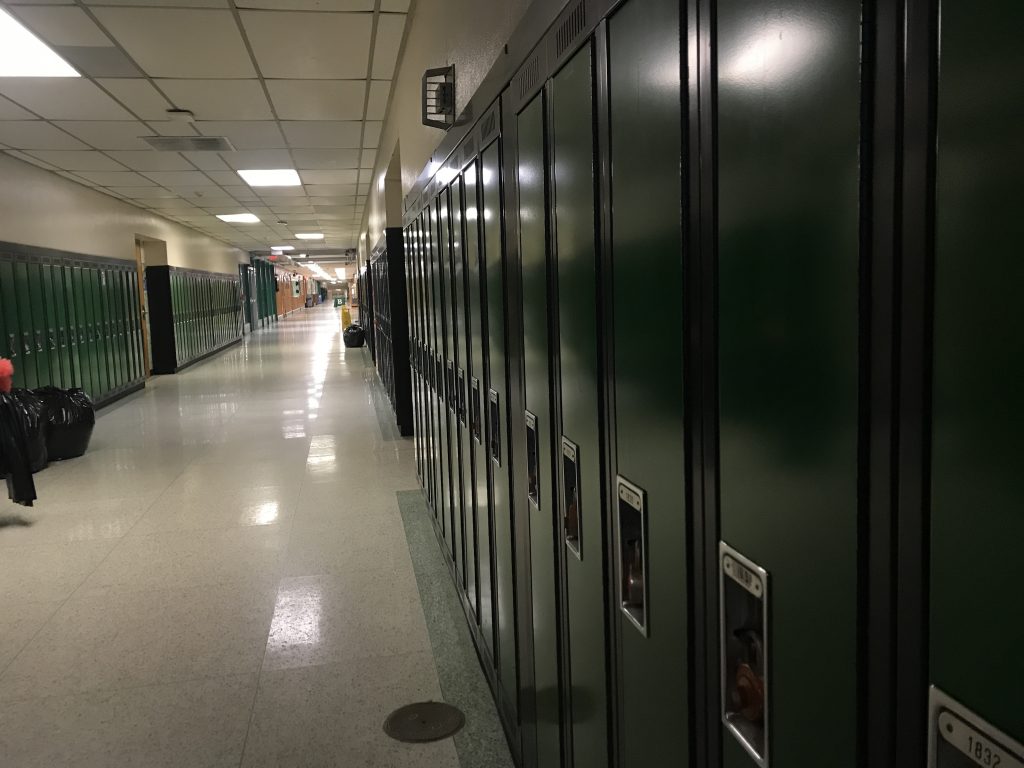
School lockers. (Photo: Daniel Nee)
Schools reopening throughout New Jersey will be assigned a color-coded risk level once students return, with the state announcing that the code would correspond with geographical areas of the state.
Among parents and school officials, the move is causing some early, quiet concern. Ocean County schools will be combined in one of the six regions with its neighbor, Monmouth County, but also the northern counties of Union and Middlesex, which have little connection to the Shore area. Neighboring Atlantic County was combined with Cape May and Cumberland counties. Burlington County was combined with Camden, Gloucester and Salem counties.
Regardless of geography, the color coding system will work similarly in all six regions. Every week, beginning this week, the state Department of Health will be providing information on coronavirus transmission at the regional level, characterizing risk as low (green), moderate (yellow), high (orange), and very high (red). The information will be posted online on the department’s website. Where a region falls in the color-coding categories is based on three criteria: number of cases in past week, percent positivity past week and syndromic surveillance in the past week.
When regions are in the very high-risk category (red), it will be recommended by state authorities that officials implement fully remote learning in schools.
- Clean and disinfect frequently touched surfaces at least daily.
- Ensure adequate hand hygiene supplies are available.
- Implement physical distancing measures such as reducing occupancy, installation of partitions and physical barriers, and cancelling large gatherings.
- Implement “source control” through wearing face coverings.
The recommendations released Thursday also provide information about length of school exclusion, the role of testing and steps to take to respond to suspected and known positive students in schools and outbreaks identified in schools. The entire document is available online here.


Police, Fire & Courts
Toms River Police Catch Well-Known Suspect Attempting to Burglarize Vehicles

Police, Fire & Courts
Fatal Toms River Hit-and-Run Results in Charges Against Local Man, 68

Police, Fire & Courts
Foursome Accused of Dismembering Body Following Murder of Toms River Man







